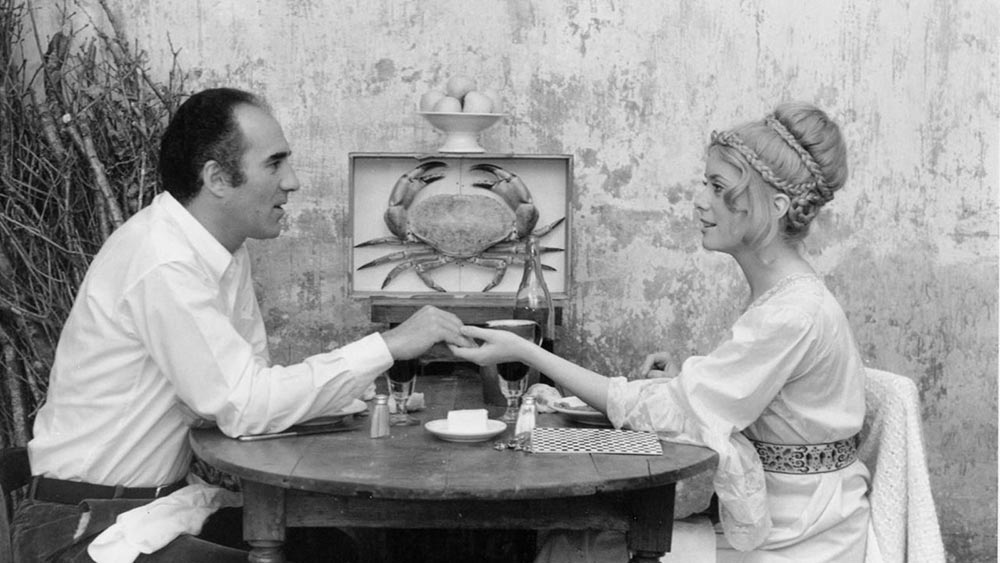Agnès Varda’s The Creatures (1966) begins with a crash and turns into a fascinating bout of vertigo: expect altered perception; a world thrown increasingly out of balance; and discordant sounds landing on the ear. We hear the collision before we see it. The couple, Edgar (Michel Piccoli) and Mylène Piccoli (Catherine Deneuve), are on their way to an idyllic seaside town when Edgar drives them directly into a tree.
Following the accident, Mylène goes mute. Edgar bears a four-inch wound down the center of his forehead. Both raise suspicion from the town’s locals. “Three months he’s been here,” the grocer remarks, “and still a stranger.” Edgar is a science fiction writer working on a novel whose characters are heavily inspired by the town’s residents. In the work, an evil chessmaster controls the townspeople via cosmic batteries, and Edgar casts himself as the hero who must save them. The film turns an imposing red whenever he takes a departure from reality. This aesthetic mode is effective, if a touch simplistic, at shuttling us between the real and the imagined, until Edgar’s literary interventions begin to have consequences in the world outside of the novel.
The Creatures (1966) has been subject to mixed reception—a commercial failure often characterized as the outlier in Varda's oeuvre. Though far more accomplished in mood than plot, the film offers an ambitious interrogation of male artist subjectivity. A man can invent the world he inhabits, be it unhinged or nonsensical. Whereas a woman? The town’s hotel proprietress craves “an unbroken life,” not just “scattered moments of bliss” which she must piece together. Hers is a life of narrative contingency, unlike Edgar’s, whose imaginings are made material. “See, girls? It pays to obey.” a man tells his daughters, who are wearing princess gowns and eating powdered confections. And then there’s Mylène, who bakes bread. Catherine Deneuve gives a highly controlled performance as the silent, assenting wife, whose thoughts and desires are limited to what can be written across a 4 x 5 inch whiteboard. At home, hide-and-seek qualifies as foreplay, though as audience members we get the feeling she really does not want to be found.
The film, however, culminates in a great reversal: Mylène gives birth and speaks for the first time since the accident. The end of Edgar’s corrupted auto-fiction is brought about by the restoration of the female voice. The author is reminded he is a creature among creatures.
The Creatures screens tonight, September 17, at Film at Lincoln Center as part of the series “A Complicated Passion: Two Films by Agnès Varda.” It will be introduced by A Complicated Passion: The Life and Work of Agnès Varda author Carrie Rickey.



